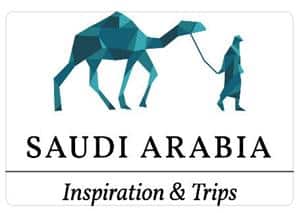Happy Holi!
Rang ke Holi is a famous Hindu festival celebrated in India and Nepal by Hindus and people of Indian origin and is more commonly known as the “festival of colours. Holi usually falls in March for two days on the full moon day called Purnima, during the Hindu month of Phalguna. The first day is Holika Dahan or Chhoti Holi, and the second is Rangwali Holi, Dhulandi or Badi Holi.
During this celebration, people play with coloured powders (gulal) and water by throwing them at each other playfully. It’s a special time when people come together to celebrate and forget their differences, renew relationships and friendships, forgive and forget past grievances, and enjoy.
Apart from the playful aspect of Holi, it also has religious significance, where the celebrations are the victory of good over evil and the start of spring. There are different legends associated with Holi, the most famous of which is the story of Prahlad and Holika.
Holi has been around for many generations, and even today, India and many other countries celebrate this ancient and cultural Hindu festival proudly. People eagerly wait for this occasion so they can celebrate this fun celebration with their family and friends.




Significance of the Holi Festival
Holi is an annual celebration in India and many other nations today. This event is observed through several ceremonies. On the night of the festival of Holi, the entire family, friends, and relatives sing songs, dance, and burn Holika. It is said that all of life’s negative aspects are eliminated by burning Holika and replaced with positive ones.
The references to this festival can also be found on the walls of old temples. The day after Purnima is known as Dol Purnima in West Bengal and Odisha. Thus this day is also called Dol Jatra.


Historical Significance
The historical importance of this festival is linked to Lord Shiva in Yoga and profound meditation; on Vasant Panchami, Goddess Parvati asks the Hindu God of love, Kamadeva, for help and other Hindu traditions like Shaivism and Shaktism. While the love god shoots arrows at lord Shiva, he opens his third eye and burns Kama to ashes, annoying both Parvati and Kama’s wife, Rati. After Rati practices her forty-day austerity in meditation, God Shiva understands, feels compassion, and restores the God of love. Non-Hindu communities like Jains and Nepalese Newar Buddhists have traditionally celebrated the occasion.
Historical sources refer to Holi as Hola, and Sikhs have celebrated it since at least the 19th century. The Sikhs’ tenth or last human guru, Guru Gobind Singh, altered Holi by incorporating the three-day Hola Mohalla martial arts occasion.


Thandai Tradition
Thandai is entrenched in the ritual of Holi. When people become a little tired of throwing each other in the colourful pool of water, they enjoy a refreshing and healthy drink called thandai. Thandai is a traditional Indian drink popular during the Holi festival and other occasions. It is a cold beverage made from milk, nuts, spices, and sweeteners.
The mixture is grounded into a paste, then mixed with milk and chilled; it can also include recipes with rose water or kewra essence, which adds a floral aroma to the drink.
Thandai is a refreshing drink believed to have cooling properties, making it perfect for hot summer days. It is also considered to have some medicinal properties and is said to aid digestion and boost energy levels. In addition to Holi, Thandai is commonly served during festivals such as Shivratri and Diwali.


Holi Celebrations of Mathura and Vrindavan
In Mathura and Vrindavan, the Holi celebration is well-known. People from various cities and countries come to Mathura and Vrindavan to celebrate this cheerful festival enthusiastically.
Lord Krishna was born in the holy city of Mathura, where he spent his childhood in Vrindavan. This festival of colours has been celebrated since Radha Krishna’s time, according to traditional Indian history.
On this occasion, the residents of Mathura and Vrindavan organize various auspicious programs and events to make the celebration memorable.
The first Maha Holi festival takes place at Banke Bihari Temple, and later the festival is celebrated in Gulal Kund in Mathura’s Braj region. The Krishna Lila Drama is also organized here by the members.








